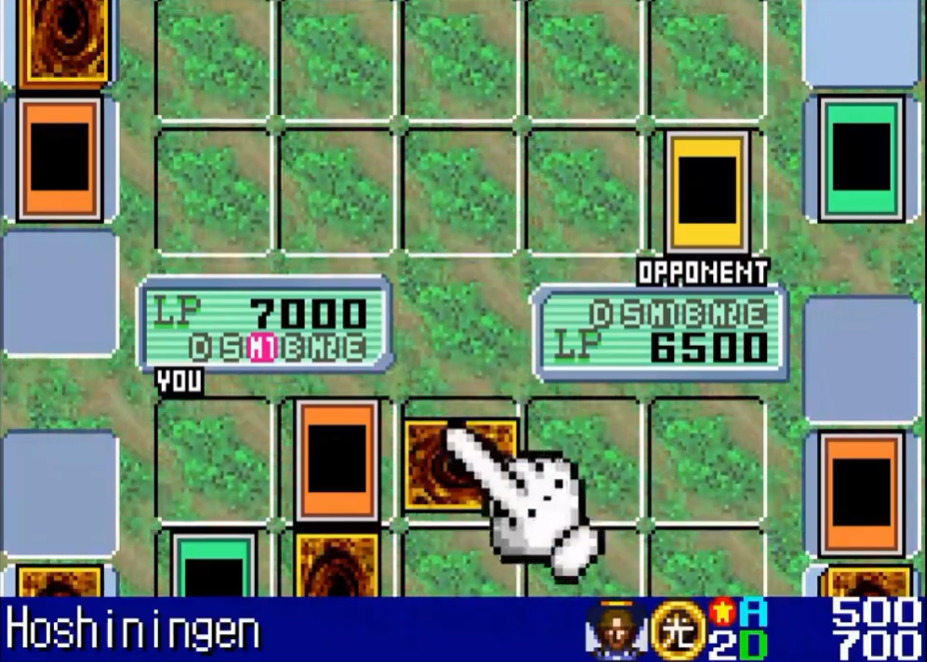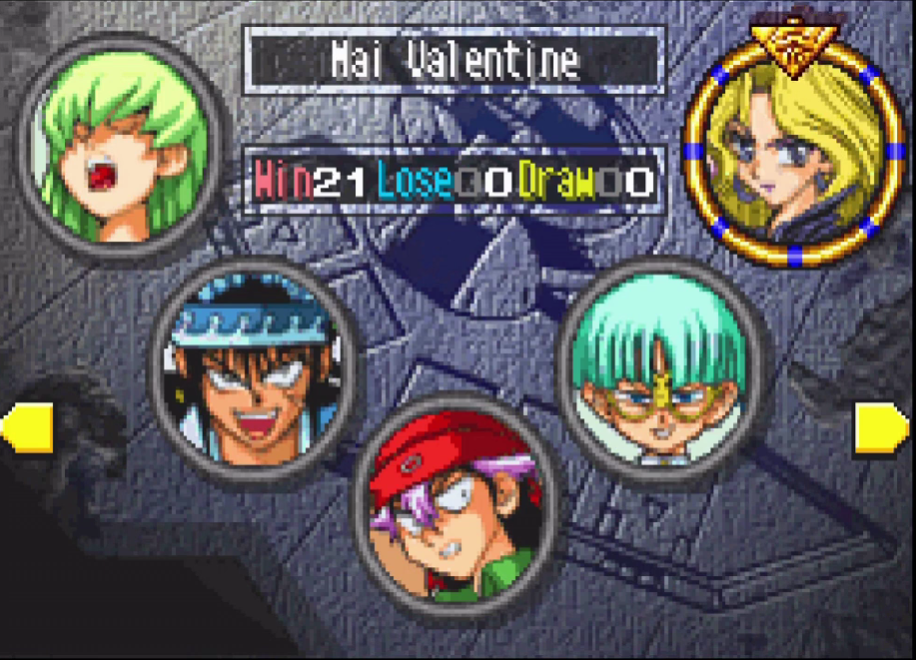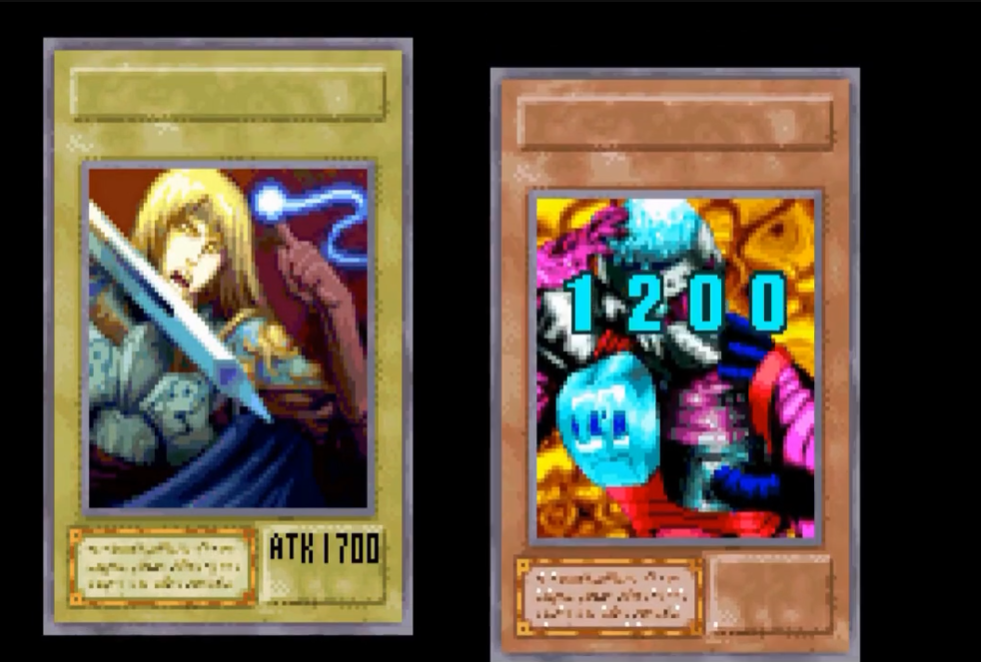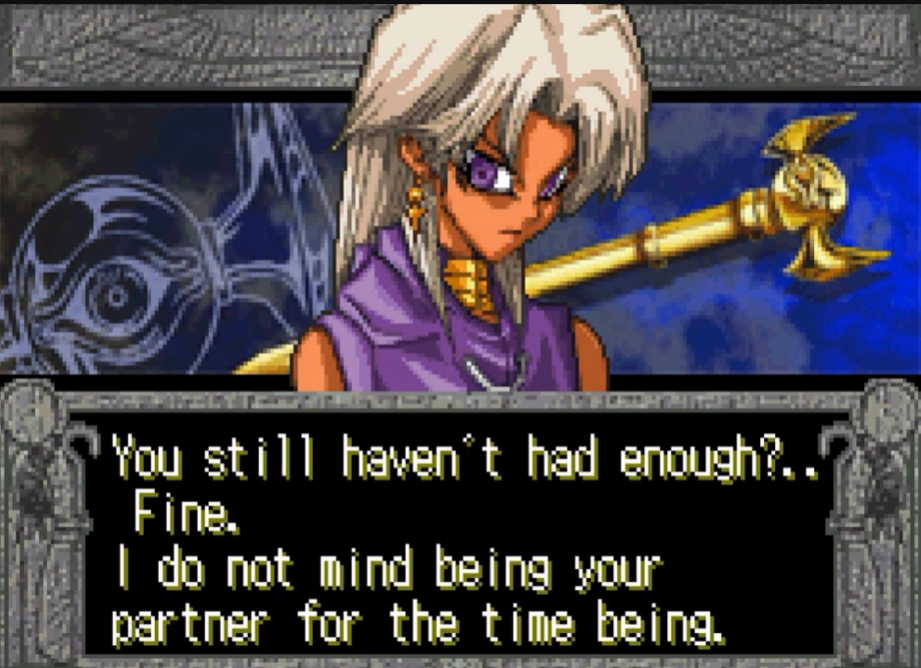Yu-Gi-Oh: The Eternal Duelist Soul - Simpler Times, Grindy Times
17/02/25

In my childhood, one of the games I played the most on my Game Boy Advance was Yu-Gi-Oh! Stairway to the Destined Duel; I wouldn’t be remotely surprised if I spent more than 200 hours just screwing around in that game, making slapdash decks and carving a path through Battle City’s duelists. Besides a certain Yu-Gi-Oh GX title (that we’ll get to one day!) it was always the peak of video game Yu-Gi-Oh for me, and sadly, the amount of time I spent in that games comes at the cost of how much I ended up enjoying The Eternal Duelist Soul. These are intrinsically similar games, with their core designs being built around the concept of being essentially simulators for the card game, with varying levels of plot and other bells and whistles thrown on top. Fairly enough, The Eternal Duelist Soul came out two years prior to Stairway to the Destined Duel, and thus will obviously a more simplistic title, but I just want to state I have an innate bias due to the amount of time I spent with Stairway, and wanted that to be clear (whilst, of course, I attempt to review this game as fairly as I can).
As I said, The Eternal Duelist Soul is at its core a simulator for how the Yu-Gi-Oh TCG was back in 2001. Normally I wouldn’t write a paragraph on the basics of a game, but considering it’s a card game, it’s just a teensy bit more important, and considering Yu-Gi-Oh has somewhat waned in popularity since I was a kid, maybe some of y’all haven’t ever really engaged with it before. For those of you who weren’t embroiled in the craze of the 2000s, Yu-Gi-Oh was fairly straightforward; each player has 8000 Life Points, and each turn play monster and magic cards in an attempt to deplete them. You run out of LP, you die. Battles between monsters is decided by their ATK and DEF stat - if a monster has a higher ATK stat then it’s opponent monster *if* that monster is in Attack Mode (played vertically), the weaker monster is destroyed, and the difference in stats is applied to the loser’s Life Points. If, instead, the defending monster is played in Defense Mode (horizontally), if it’s opponent has higher ATK then it’s DEF, the loser is destroyed, but the losing player does not lose Life Points. If a player’s field is empty of monsters, of which they can *normally* only summon one at a time, is empty, the other player can attack their Life Points directly. There’s more intriaces, with spell and trap cards, and monsters with special effects or summoning requirements (such as Tribute, Fusion or Ritual Monsters), but that’s the basic gist of how early Yu-Gi-Oh is played. It’s a lot more intuitive if you’re actually playing it, even sans an in-game tutorial.

The game features over 800 cards, which as far as I can tell roughly replicates the state of the TCG at that time, and it’s honestly refreshing to play Yu-Gi-Oh as it was; when Ritual and Fusion cards were the height of complexity, non-Effect monsters could rule the roost of the early game, and a monster with 2500-3000 ATK were nigh-nightmares to deal with if unprepared. Mechanics for monsters were on the simpler side - killing a monster might summon another, or they can always attack you directly, stuff like that, and these more simplistic rulesets help the game’s play out in quick, well-paced affairs (well, as much as the game allows), and even a beginner will probably be able to ascertain how to play and succeed in this game. Now, I challenge you to try and understand the rules of current Yu-Gi-Oh - just don’t, that’s all I’ll say.
Players progress through the game by fighting ‘tiers’ of opponents, five at a time, beginning with the weaker Tier 1 duelists, who consist of relative lightweights like Joey Wheelers, Tristan, and Small Yugi. Each successive tier is unlocked by defeating each duelist on the lower tier a certain amount of time, i.e Tier 2 is unlocked by beating all the Tier 1 Duelists twice. Additionally, every time you win a duel, you’ll get a choice of various booster packs to fill out your deck, with new packs unlocking after completing various hidden tasks - again, usually beating certain Duelists or entire tiers a certain amount of time. The game does break from this repetitive cycle from time to time, via the game’s calendar system, which progresses by one day for every duel. Every week, you’ll get a free pack which can contain some decent cards, and there’ll be tournaments and whatnot as the weeks and months wear on - sure, they’re not *that* different to the core loop, since you’re still just playing the same card game again and again, but sometimes in a game like this set dressing is all you need.

Sadly, once you’ve played a few hours of the game, you’ve already seen much of what it has to show. Due to the game’s (relatively) small amount of cards you’ll be seeing a lot of the same staple cards popping up no who you’re fighting - expect a lot of Dark Holes, a lot of Raigeki, a lot of cards that’ll just kill or remove everything you have, no matter what kind of anti-Magic/Trap cards you have, so be sure not to throw all your eggs behind one powerful monster. At the very least every Duelist features their own signature cards, your Dark Magician for Yugi or Blue Eyes White Dragon for Kaiba that normally heralds the climax of a duel, but very few duelists have a personality outside a select few signature monsters and the general ‘vibe’ of their monsters - usually their strategies normally don’t divert from ‘big monster go brrrrr’. Which, to be fair, isn’t exactly different then my own strategies when it comes ot early Yu-Gi-Oh.
The inherently repetitive nature of the game born from the constant rematches and frequently reappearing cards is worsened by just how damn slow everything in this game is. Again, this issue was exacerbated by my time playing Stairway, as the duels are identical in format, but are just so much snappier. Drawing cards, battle animations, playing cards, transitions between phases and turns; it all feels so glacial it makes the game far more frustrating to engage with. Visually and audibly, the game also doesn’t really do much to change up the same experiences - the same beats, the same tabletop visuals - like I said, the game core tenet is creating an accurate simulation of the TCG, but it could’ve changed things a bit up for some of the bigger, more iconic duelists… but I’ll be honest, even the basic tunes aren’t particularly engaging, so I played much of this game on mute, so I suppose that makes most of my musical opinions on this game moot.

One issue I found pretty frustrating in Eternal Duelist Soul is that it felt like it takes some time to build a cohesive and overall effective deck; you won’t be starting with any of the top tier 1-4 * monsters (who can be summoned without any general restrictions) like many of the Duelists will, putting you on the backfoot from the start, and there’s no indication as to which boosters contain what cards (outside of it’s signature card, i.e Dark Magician or Red-Eyes Black Dragon) which could help with building towards a particular deck. Until you find a handful of decent staples - cards like Trap Hole, Change of Heart, Monster Reborn, monsters on the power level of Summoned Skull and it’s like to really chunk through your foe’s monsters and Life Points, you’ll be struggling a bit. Whilst you probably won’t struggle *too much* with the lower tier duelists… sometimes you’ll just get real unlucky without any real countermeasures, and the further you move up the tiers, the worse it gets.
This issue can be somewhat circumvented by the game’s password feature, which allows you to put in a physical password on actual Yu-Gi-Oh cards (or just find them online). Plugging these passwords in on the deck menu lets you nab the cards in question for free, but I feel doing this goes against the spirit of the game's progression. Eventually, though, you’ll find a deck that works for you - personally, my deck was built around using the strongest, non-sacrificed-requiring monsters I could muster, and using Equip Cards to power them up to match them with other Duelists ace cards. Your mileage may vary, but there’s a very decent amount of strategies to follow in this game - some cheesy, some more satisfying. You just gotta put in the time to build those decks and grind out those booster packs - which can be self-serving, as certain boosters are only unlocked by beating certain duelists or entire tiers of duelists a certain amount of time.

There’s almost no story whatsoever within Eternal Duelist Soul, with any ‘narrative’, if you can even describe it as that, existing just within various introductions, victory and defeat quotes from the two dozen or so Duelists you’ll be battling throughout your time with this game. Which, with credit going where credit is due, I will say that the game does capture the personalities of the anime cast, even the ones like Espa Rosa or Mako Tsunami who had very little relevance to the show in the first place. A few years later Stairway would take the simulation angle and manage to adapt an arc of the anime alongside it, but it was clear here Konami just wanted to nail the representation of the card game as a whole, and I understand that decision - though considering how surprisingly decent the writing and story of later Yu-Gi-Oh games can be, I won’t lie and say I’m a little disappointed by how bare-bones The Eternal Duelist Soul is.
Outside of a bit of a novelty seeing where Yu-Gi-Oh began on the GBA, and the first time it *really* felt like you were playing the actual card game on the go, there’s little reason to play The Eternal Duelist Soul. This is less to do with the quality of the game on it’s own - at the time it came out, I could imagine this taking over my life, considering how addicted I was to the franchise. It’s simply been replaced and outstripped by sequels that improve upon its niche in nearly every way, games that feature more complex and more faithful to its source material - and the near total lack of story doesn’t help. Ultimately, it’s very repetitive, but it’s a fun time capsule to play with for a few hours, to see how Yu-Gi-Oh functioned at the turn of the century - but ultimately, you’re better off playing the later iterative versions of this game, like the fantastic Stairway to the Destined Duel.
Thanks for reading my review of Yu-Gi-Oh: The Eternal Duelist Soul! Fun little game, but I’m more excited for later Yu-Gi-Oh games to mess around in. Should be back to more regular reviews again, now that my schedule has cleaned up (and I’m playing slightly simpler games). As an aside - I don’t have a planned schedule or anything, but I’ve added a little section at the bottom of the Master List - a taste of things to come. In any case, you can find me over under GameBoyAbyss on BlueSky or Twitch, and email me at mgeorge7003@hotmail.com if you have any questions or requests. Thanks again for reading, and I’ll see you next time!
